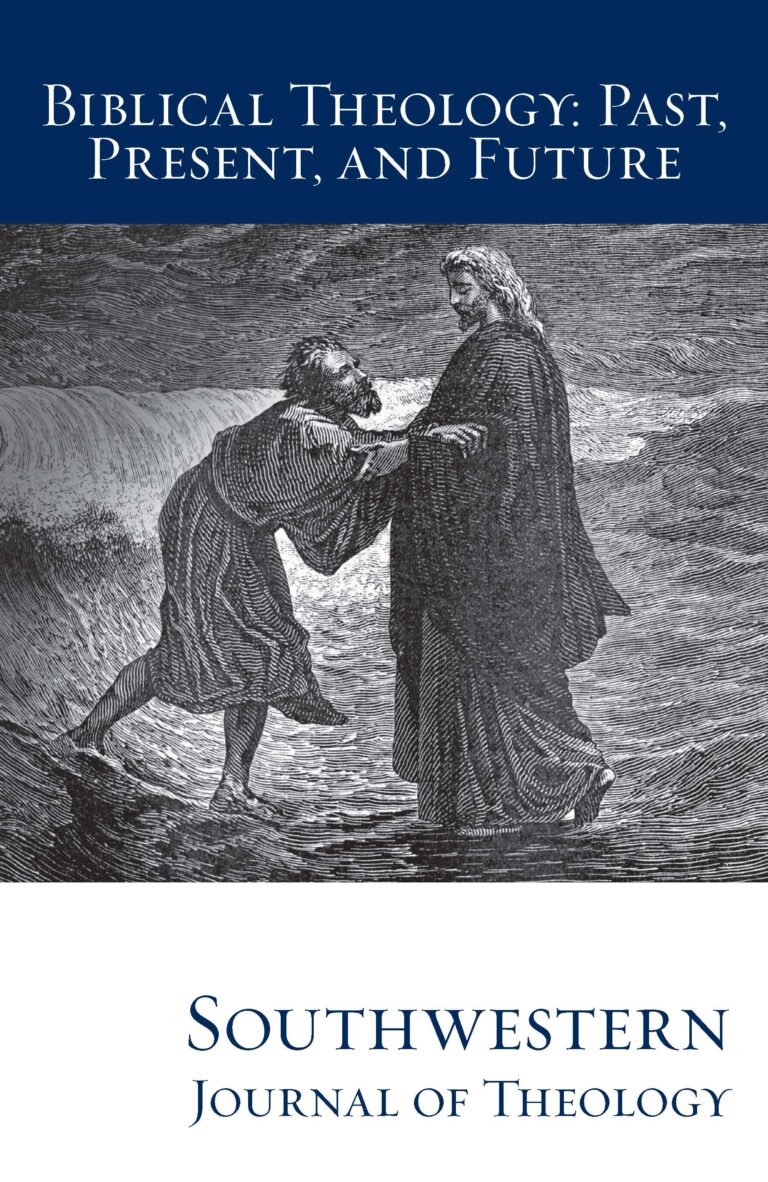
Biblical Theology: Past, Present, and Future (II)
Southwestern Journal of Theology
Volume 56, No. 1 – Fall 2013
Managing Editor: Terry L. Wilder
By John Goldingay. Grand Rapids: Baker Academic, 2010. 345 pages. Softcover, $19.99.
This collection of essays brings together twenty-five essays from John Goldingay’s celebrated career. With only a few exceptions, the essays have been previously published elsewhere. Each essay answers a popular question such as, “Should I tithe net or gross?” or, “How should we think about same-sex relationships?” Goldingay attempts to answer these questions from the perspective of a Biblical theologian rooted firmly in the Old Testament.
It should be noted that despite the title, this is not a collection of exclusively Old Testament answers. Goldingay admits as much in the preface writing that these answers find their “center of gravity in the Old Testament” (xi), but come from the entire Bible. It should also be noted that whereas the collection intends to present Biblical theological answers, it is nevertheless organized in a systematic format; moving from essays on God to man to sin to covenant to eschatology with the bulk of cultural questions on topics such as animals, gender roles and homosexuality near the end.
Goldingay rapidly moves from passage to passage in order to make his points, repeatedly aiming the reader back to the Biblical text. He also regularly discusses events from his personal life in order to illumine his points. The stories of his relationship and love for a severely disabled wife make his arguments all the more authoritative when speaking of how disability relates to Biblical anthropology. Goldingay is an engaging writer with a warm writing style.
With such an engaging writing style and frequent focus on the Biblical text, it makes it all the more difficult not to recommend this book. Whereas Goldingay should be praised for his careful attention to the biblical text, he should be rejected for his hermeneutic, which leads to unorthodox conclusions. The most influential hermeneutical principle leading to such faulty conclusions comes from reading human personality into the text and even into the nature of God himself. For instance, Goldingay describes God as having dominant and secondary personality traits, just as humans do. He images God as a bundle of emotions, sometimes spilling out in anger, but usually keeping his “temper under control” (12). Complex and contradictory emotions in God do not cause a problem for Goldingay because he thinks they reflect human emotional states and thus reveal something of what it means to be created in God’s image. Goldingay projects human categories onto God with regularity in these essays. He makes his hermeneutic explicit when he suggests that since “human beings are made in God’s image . . . using human models to understand God is illuminating” (40). Although Goldingay opposes using philosophical and theological categories to understand God, unless they are explicitly outlined in the text, he nevertheless regularly reads human emotional, mental and psychological states onto God in a similar manner.
The clearest examples of this hermeneutic leading to unorthodox conclusions come in the chapter considering whether or not God has surprises (25). Goldingay argues that both classical and open theists are incorrect. Instead of presenting a via media, as he often does in regards to other topics in this collection, Goldingay goes beyond the open theists in his rejection of orthodox theology. He says that God “gains knowledge in the same way as anyone does,” and that God “can find out anything” (34), but must look to find it. He claims that God has both “hardwired” innate and empirically learned knowledge. Whereas the open theist argues that God knows all things present and past, Goldingay suggests that God must even discover information about the present, although He has the power to find whatever he seeks. In regards to human hearts, Goldingay says that “God does not automatically know what is in them but can look in and discover what is there” (34).
Obviously, such views must be rejected by Baptists who confess that God’s “perfect knowledge extends to all things, past, present, and future” (2000 BF&M, II). Goldingay realizes that most Christians interpret his key passages anthropomorphically, but he rejects such readings for more literalistic ones. Strangely, he rejects this literalistic hermeneutic when discussing gender roles or other culturally controversial topics where the conservative position finds support in a literal reading of the text.
In summary, this collection of essays show how one prominent Old Testament scholar views a wide range of topics, and does give a stronger emphasis to the writings of the Old Testament than most popular Christian writing. Still, the negatives outweigh the positives and conservatives will need to look elsewhere for orthodox applications of the Old Testament to Christian life.





